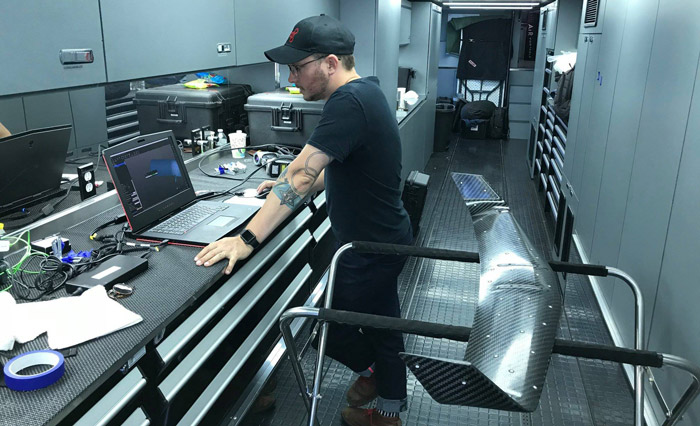September 13, 2024
The Impact of 3D Scanners on NASCAR Stock Car Racing See the articleHere’s something that will make you wish you were back in college: the Makerspace, a Design and Innovation Lab at the College of Engineering at the University of Wisconsin-Madison. Launched a few years ago after the overhaul of an old engineering library, it’s a 12,000 ft 2 bright, colorful, cheery space where students can learn about different technologies in a very hands-on way!
Collaborative in nature, it is open to all students and staff at the College of Engineering and even beyond. Students and the faculty from the UW-M are welcome to join in and collaborate with engineering students on various kinds of projects. The space is extremely diverse in terms of gender and ethnicity, creating a positive, motivating environment for all students to bond over technology and innovation.
One thing that is really interesting about the Makerspace is that there are only a few people working there full-time: the staff is mostly comprised of students, both from undergraduate and graduate levels, with the latter serving as assistant managers. This kind of peer learning empowers students to elevate their skills—and improve—together.
The diverse staff at the Makerspace
The Importance of 3D Scanning within the Makerspace
While the Makerspace features a large range of very impressive high-tech equipment (millions of dollars of equipment, in fact), one stands out for creating a far broader reach than expected. As you might have expected, it’s 3D scanning! Talking about how 3D scanning attracted people from very different backgrounds and interests, Shop Manager Karl Williamson explained that the
technology “touched a lot of different areas. I don’t think we expected many of them.”
3D scanning is highly relevant to teach engineering students. Makerspace Director Lennon Rodgers added that the relevance was so important because “students will be using it when they graduate as engineers. We really wanted students to be able to take something in the physical world and bring it into the digital world.”
How Creaform Educational 3D Scanners Fits Right in
When looking for which 3D scanner to buy, Rodgers said their most important requirements were that the chosen technology be “really easy for the students to use [as well as] very mobile.” Since the 3D technology would be mostly handled by students it had to be very simple and user-friendly!
The Makerspace is now fitted with a Creaform ACADEMIA scanner, which set itself apart from the competition due to its “portability, resolution, speed of use, ease of using software and industry standard hardware,” according to Rodgers. Actually, the team found that the portability and resolution required could ONLY be found with Creaform products.
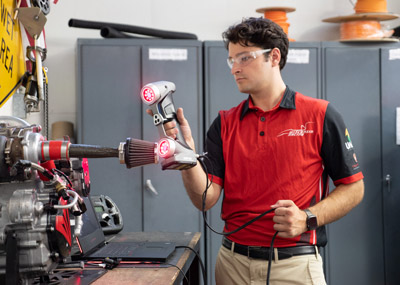 |
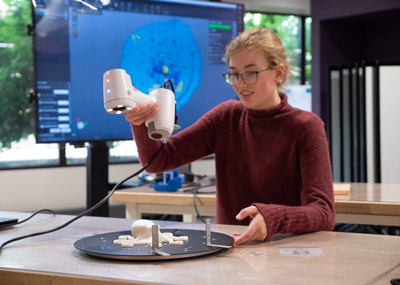 |
3D scanning at work by users of all levels at the Makerspace
The Creaform ACADEMIA scanner is “an essential engineering education tool,” Rodgers added. “Students can take something into the virtual world for inspection and/or modifications. Other technologies, such as virtual and augmented reality that can be used for visualization, and digital fabrication tools, including 3D printing and laser cutting, can be used to quickly prototype
designs using scans.”
A Few Makerspace 3D Scanning Applications
The Makerspace’s motto is “Where limits don’t exist.” This seems to apply well to the type of work that they perform when it comes to 3D scanning.
3D scanning the carbon fiber parts of an IndyCar vehicle
Last year, the crew collaborated with an IndyCar team and used the Creaform HandySCAN 3D to digitize a few carbon fiber parts. The project took place at the legendary Road America, a motorsport road course in Wisconsin that has been dubbed “the best test of road racing in North America” and used for races since 1955!
The 3D scanning process was performed in a cramped trailer—but this is exactly where one of the most remarkable features of the HandySCAN 3D can really shine: the scanner can be used anywhere and generates accurate, repeatable results regardless of space constraints and surrounding environment!
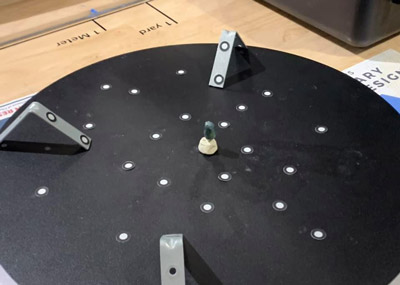 |
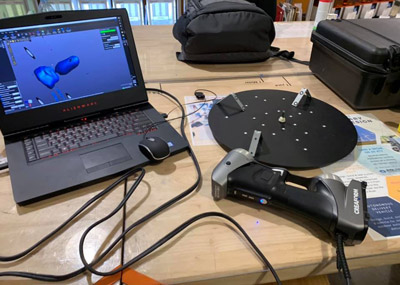 |
3D scanning at work by users of all levels at the Makerspace
In a completely different field, resident Makerspace graduate student staff and 3D scanner pro Katelyn Miller recently used the Creaform ACADEMIA 3D scanner to digitize a monarch butterfly chrysalis (and even got to watch it hatch afterwards!). Such a project highlighted another feature of the 3D scanner: providing incredible details for objects both big and (in the case, very) small, including those with irregular, organic shapes.
You can follow the Makerspace page on its Facebook. Warning! You might just want to set up your very own Makerspace concept!


